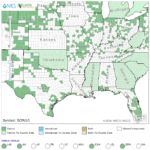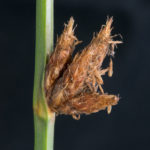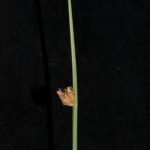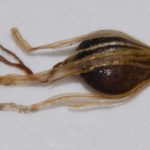Schoenoplectus pungens
USDA, NRCS. 2018. The PLANTS Database (http://plants.usda.gov, 28 March 2018). National Plant Data Team, Greensboro, NC 27401-4901 USA.
Illustration courtesy of University of Florida/IFAS Center for Aquatic and Invasive Plants. Used with permission.
What is Three-Square?
Physical Characteristics
Leaves:
- 2-4 leaves
- Brown in color
- 0.16-0.2 inches long
- Well-marked midnerve
Flowers:
- 28-50 flowers
- 1-4 spikelets
- Immobile
- 0.28-0.67 inches long
- 0.16-0.2 inches thick
- Oval- or sword-shaped
Fruit:
- One seed
- Does not open to release seed when ripe
- 0.09-0.13 inches long
- 0.08-0.09 inches wide
- Flat or slightly bulging
- Smooth
- Dark brown in color when ripe
Stem:
- Creeping
- Reddish-brown in color
- 0.08-0.13 inches thick
Hollow Stems:
- Growing upward
- 0.75-5 feet long
- 0.08-0.23 inches thick
Where Does it Grow?
Three-square can be found in low, moist, often alkaline ground, in water, and around seepage areas.
Pros and Cons of Three-Square
Seeds are consumed by ducks; while geese, muskrats, and nutria consume the rhizomes. Submerged portions of all aquatic plants provide habitats for many micro and macro invertebrates. These invertebrates in turn are used as food by fish and other wildlife species (e.g. amphibians, reptiles, ducks, etc.). After aquatic plants die, their decomposition by bacteria and fungi provides food (called “detritus”) for many aquatic invertebrates.








